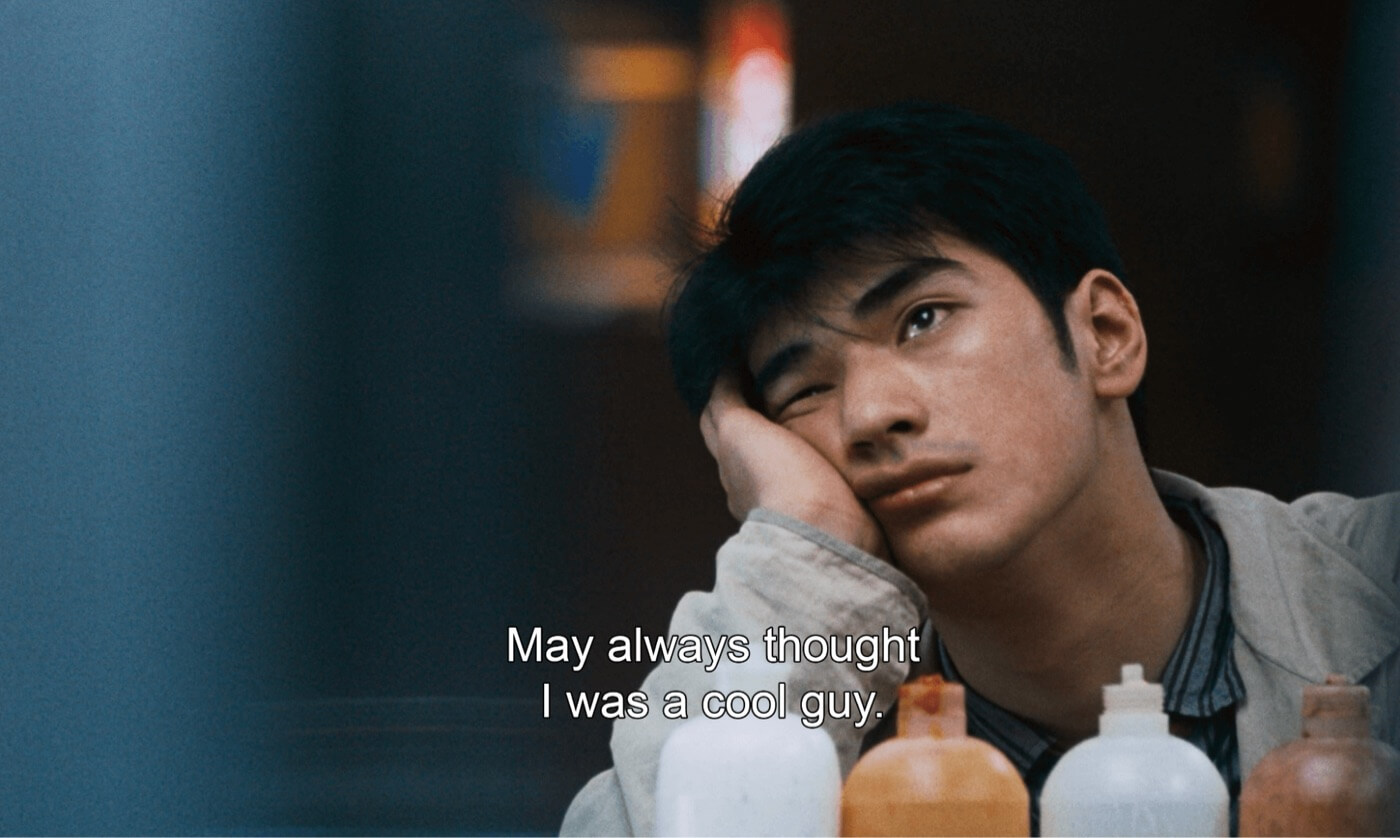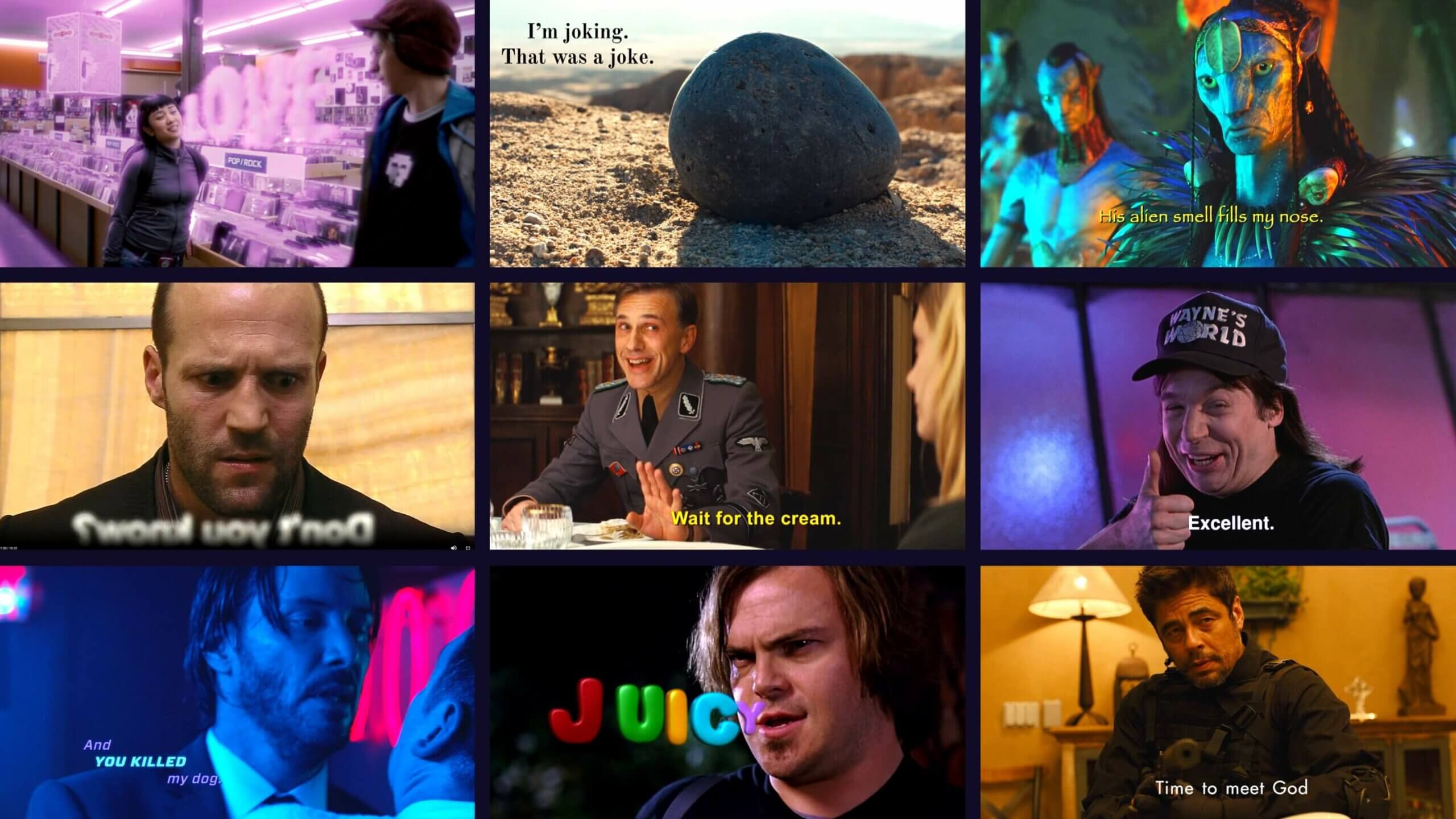Subtitles are more than just words at the bottom of the screen; they’re a powerful tool that can break language barriers, improve accessibility for the hearing impaired, and promote cultural exchange through cinema. As we explore the intricacies of subtitles, we’ll also discover how they have evolved over the years and their significance in today’s globalized film industry. So, grab some popcorn and join us as we uncover the magic of subtitles and their role in elevating our movie-watching escapades.
What Are Subtitles in Film?
First, let’s define subtitles
Before diving into the world of subtitles in film and their undeniable impact on enhancing viewer experiences, let’s look at the subtitles definition.
SUBTITLES DEFINITION
What are subtitles in film?
Subtitles are textual versions of a film's dialogue that appear on screen, typically at the bottom, and are synced with the audio to provide viewers with a clear understanding of the spoken content. They can be especially useful in situations where the film's language differs from the viewer's native language, allowing them to follow the story and engage with the characters without any linguistic barriers. In this case, subtitles can also translate titles which appear in a foreign language.
In addition to aiding comprehension for foreign films, subtitles also serve other purposes, such as assisting those with hearing impairments, helping viewers understand unfamiliar accents or dialects, and even supporting language learning. They can be displayed in various formats, colors, and font styles to ensure optimal readability and accessibility for all viewers.
They play a crucial role in enhancing the film-watching experience by bridging linguistic gaps and ensuring that everyone can enjoy the magic of cinema, regardless of their language proficiency or hearing abilities.
What are subtitles used for?
- Break language barriers
- Improve accessibility
- Enable discreet viewing
- Enhance comprehension
How Are Subtitles Made
A brief history of subtitles in film
Just like every other aspect of cinema, subtitles have undergone a remarkable transformation over the years. Driven by technological advancements and the ever-growing demand for accessible content, the creation, implementation, and necessity of subtitles have continued to evolve. Let’s dive into a concise yet captivating history of subtitles in the world of film.
Early Beginnings with Silent Films
In the era of silent films, captions and intertitles played a crucial role in conveying dialogue and narration to the audience. These text-based representations were displayed on screen, usually accompanied by artistic designs, and inserted between scenes to provide context or explain the character's actions.
As a precursor to modern subtitles, intertitles laid the foundation for the integration of text into visual storytelling.
Subtitle example in Nosferatu (1922)
Transition to Talkies
The advent of talkies, or films with synchronized sound rather than asynchronous sound, brought about new challenges in reaching international audiences. Language barriers became more apparent, and filmmakers sought ways to make their movies accessible to viewers around the world.

Breathless (1960) • Subtitle example
This led to the development of subtitles as we know them today, with translated text appearing at the bottom of the screen. This allows viewers to follow the dialogue while still enjoying the film's visuals and audio.
Technological Advancements in Subtitle Creation and Display
Thanks to advancements in technology, subtitle creation and display have evolved significantly. Early subtitles were often painted onto the film itself, a labor-intensive process that later transitioned to the use of specialized equipment for projecting text onto the screen.

Roma (2018) • Subtitle example
With the digital age came computer-generated captions, which allowed for easier editing, formatting, and synchronization. Today, software solutions enable subtitle creators to work with greater precision and efficiency, ensuring seamless integration with the film's audiovisual elements.
The Rise of Streaming Services and Their Impact
The emergence of streaming platforms has had a profound impact on subtitle availability and accessibility. As these services cater to global audiences, they recognize the importance of offering options in multiple languages to accommodate diverse viewers.

Subtitle example in Chungking Express (1994)
In addition, streaming platforms have introduced customization options, such as adjustable font sizes, colors, and styles, allowing users to tailor the subtitle experience to their preferences.
This increased accessibility and personalization further solidify their essential role in today's film industry.
Related Posts
Define Subtitle vs. Closed Captions
Subtitles vs. Closed Captions
Understanding subtitles vs. closed captions is an important distinction. Both serve the purpose of displaying text on screen to aid viewers in understanding a film or video's content.
But they are distinctly different in their nature and applications.
Defining Subtitles and Closed Captions
Subtitles are textual representations of a film or video's spoken dialogue, typically displayed at the bottom of the screen. They may also provide translations of on-screen text or signs. But generally do not include non-dialogue audio cues or descriptions.
Closed captions, on the other hand, are specifically designed to aid the deaf and hard-of-hearing community. Beyond dialogue, they also provide relevant sound effects, music cues, and speaker identification.
Closed captions can typically be turned on or off by the viewer, depending on their needs and preferences.

Closed Caption Symbol
When to Use Subtitles and Closed Captions
Subtitles are best suited for:
- Foreign films, where the viewer's native language differs from the film's spoken language.
- Situations where viewers struggle with understanding accents or dialects.
- Dialogue which is quiet/poor quality.
- Language learning, as they can help improve listening, reading, and comprehension skills.
Closed captions are ideal for:
- Viewers who are deaf or hard-of-hearing, as they provide a comprehensive textual representation of the audio content.
- Discreet viewing, such as in quiet environments like libraries or late-night watching when others might be sleeping.
Understanding the differences between subtitles and closed captions is essential for filmmakers and viewers alike. By recognizing their distinct purposes and applications, we can ensure that films and videos cater to diverse audiences and offer an inclusive, enjoyable experience for everyone.
Related Posts
What are Subtitles Used For?
The Importance of Subtitles in Film
Subtitles play a crucial role in enriching the film-watching experience for viewers worldwide. In this section, we will delve into the various aspects that make them an indispensable element in cinema. This includes their impact on the viewing experience, how they break language barriers, ensure accessibility for the hearing impaired, and contribute to cultural exchange.
Enhancing the Viewer Experience
Subtitles not only provide translations for foreign dialogue but also help viewers understand unfamiliar accents, dialects, or fast-paced speech. By offering context and clarity, subtitles allow audiences to fully immerse themselves in the film's narrative. This results in a more enjoyable and engaging viewing experience.
In this video, Vox breaks down how the need for subtitles has grown over time for better viewing experiences and why this might be the case.
Why we all need subtitles now
Breaking Language Barriers
In our increasingly globalized world, films are produced and consumed by diverse audiences. Subtitles bridge the gap between languages, enabling viewers to appreciate and understand movies from different countries.
This linguistic connection fosters a sense of unity and broadens the reach of stories told through cinema.
Accessibility for the Hearing Impaired
For the deaf and hard-of-hearing community, subtitles are a vital tool in making films accessible. By providing a written dialogue and essential audio cues, subtitles ensure that these viewers can enjoy films alongside their hearing counterparts, promoting inclusivity and equal access to entertainment.
Enhancing Story
Sometimes, a subtitle can do more than simply translate or transcribe. Used creatively, a subtitle can add to a film’s story or style.
Take this famous scene from Annie Hall:
Annie Hall subtitle scene
Here, the subtitles are “translating” what the characters actually mean. It makes for a great joke, and advances Annie and Alvy’s relationship.
Alternatively, we can look at a film like Man on Fire. Director Tony Scott opts for subtitles which are stylistically placed:
Man on Fire
Note, however, that even though they’re stylized, the subtitles remain legible.
Cultural Impact
Subtitles facilitate cultural exchange by making foreign films more approachable to global audiences. They enable viewers to explore new perspectives, ideas, and experiences from diverse filmmakers. This ends up fostering empathy and understanding across cultures.
In essence, subtitles contribute to the rich tapestry of global storytelling, allowing cinema to transcend borders and resonate with people everywhere.
By understanding the crucial role subtitles play in enhancing the film experience for a diverse audience, we can better appreciate their value and significance. From breaking down language barriers and promoting cultural exchange to providing accessibility for the hearing impaired, subtitles have truly transformed the way we engage with films across the globe.
Up Next
Best International Feature Film Winners
As Bong Joon-ho said in his Oscar acceptance speech, subtitles open a new world of films. A great place to start exploring this new world is by watching some of the best International Feature Film Oscar winners. Check out the full list in our next article.
Up Next: Best Int'l Film Winners →
Showcase your vision with elegant shot lists and storyboards.
Create robust and customizable shot lists. Upload images to make storyboards and slideshows.

No mention of the general stupid practice of having white subtitles over white backgrounds. I can't think of a video/film which does not have this glitch ruining the programme.